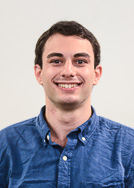As a research university, Stanford may not guarantee that it has the best undergraduate teaching in the country, but it certainly prides itself on quality. That being said, certain departments seem to disregard this quality in favor of creating “weeder” classes.
This is particularly prevalent in pre-med classes, specifically, the introductory chemistry sequence (Chem31A, Chem31B and Chem33) and Math 51. It is not very common to hear people talk about having a great experience in any of these classes. In fact, they are some of the classes about which we hear the most derision. And it is not that people generally loathe all mathematics or chemistry courses at Stanford. Rather, the complaints seem to center around the organization of these classes, the often poor quality of teaching and the low grades.
Using Math 51 as the case example, it is a large class (with nearly 300 students enrolled this quarter) that attempts to cover linear algebra and partial derivatives in a single course. There are 7 weeks of linear algebra and 3 weeks of derivatives. At semester schools, linear algebra is a full semester course, more than twice our 7 weeks. The contents of the course are rushed to such a point where there is a deep lack in theory, and the examples are too simplified to be practically useful. For anyone that actually requires practical knowledge of linear algebra, it is entirely insufficient.
And the content is taught with disregard for theory or rigor, to the point where two years ago Stanford University Mathematical Organization hosted a symposium titled “Lies I learned in Math 51.” The abstract of that talk stated: “If you took Math 51 here at Stanford, you might have learned to put a matrix in a strange thing called reduced-row-echelon form using Gaussian Elimination. This is a great way to get down and dirty and solve systems, but its formal properties are exactly what one might expect of a form whose definition is the thing you get when you apply this algorithm.” It is a sheer disregard for quality at the expense of many zealous students who were excited to learn college math, just to be disappointed. The course is taught to be widely applicable to any major which needs matrix math, but CME102 is also taught with the intention of covering applied matrices. Math51H covers theory rigorously, but Math51 seems to only toss in theory when convenient, just to give the veneer of being a math course. The fact is, it is a course on basic algorithms, not math. And perhaps this distinction is what makes it so difficult for many to learn. For example, without the theoretical backing of LU decompositions, the question of why we convert matrices to reduced-row-echelon form falls on blank ears. The idea of complementary space is wholly ignored as well. These are fundamental concepts of linear algebra.
In the chemistry department, there are similar complaints. Multiple students cited that Professor Jenn Schwartz taught 31A and B well, but that the second teacher (who is not the same every year) was consistently not up to the same par. But outside the quality, another important aspect is the grading. The class has a meager curve, and graders can be cruel in point reductions for minor errors. Moreover, students often feel very comfortable with the material in section only to find that the exams test exceptions rather than the core concepts or actual understanding. It is not necessarily that students do not understand the material, it is that the tests do not test for this understanding. Rather, they seem to prefer making a distribution and dropping students, as pre-med courses seem to require.
This comes through pretty clearly in the number of students who choose to major in chemistry: It is disproportionately smaller than the number of students in introductory courses. There are roughly 60 students in the major (and 26 that are not in the biology track) but over 400 just in 31A this quarter. Why does Stanford, an “elite” university with some of the most qualified students in the country, seem to have a goal of making intelligent people decide not to become doctors because of chemistry? And nationwide, chemistry courses seem to have this (perhaps unintentional) “goal,” most prevalent in making minority and low-income students drop pre-med studies.
Computer science, on the other hand, is the school’s largest major. It also has introductory courses that are widely thought of as the best courses at the entire school, based on quality. Correlation does not necessarily lead to causation, but people who enjoy a class are more likely to continue taking more courses on a topic. The people who continue with chemistry and math at Stanford much more often than not developed a passion for those subjects in high school, and not at Stanford. Excellent teaching can inspire that passion. It seems to do so in CS. But passion in chemistry and math, on the other hand, seem to be dulled rather than sharpened from the introductory courses here.
A stronger emphasis on quality teaching might significantly change this. In introductory courses as a whole, the interactions with professors are lower due to class size anyways, and having a PhD does not increase your qualifications to teach introductory topics. And for many faculty, they do not even want to teach the introductory courses, whose contents may be quite boring in their simplicity for someone as specialized as professors. Hiring lecturers for these introductory courses with the intention of increasing quality would have no adverse effect other than increasing the quality of courses and freeing faculty to focus on topics that may interest them more. The CS department already does this. And putting more effort into introductory classes, rather than giving them the feel of being weeder classes, might improve participation in higher level classes, too.
Contact Joe Troderman at jtrod93 ‘at’ stanford.edu.
